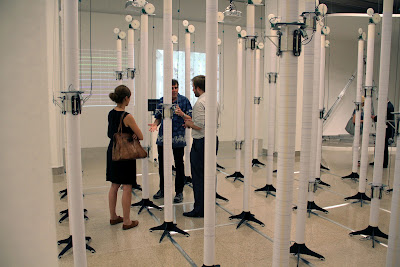Why use Brain Cells in Art?

“Bioart” refers to the manipulation of living cells, tissues, or organisms (or their derivatives) for artistic purposes. While artists and biologists have collaborated for centuries to illustrate biological phenomena (you can see some fantastic modern examples of this tradition here ), “Bioart” refers to the practice started in the early 1990’s of artists training in and performing techniques from the biological sciences, such as cell culture, genetic engineering , and surgery . Artists have used these technologies to create novel living entities (such as a leather jacket grown in vitro ) or modify existing living entities (such as Stelarc’s third ear ). These tools provided new options for aesthetic statements (the ability to radically sculpt living tissue to suit particular tastes), ethical statements (if we are growing a small, edible steak in a vat , should we continue to kill cattle for food?) as well as a novel flavor of irony (that “victimless” PETA-endorsed cultured steak re

